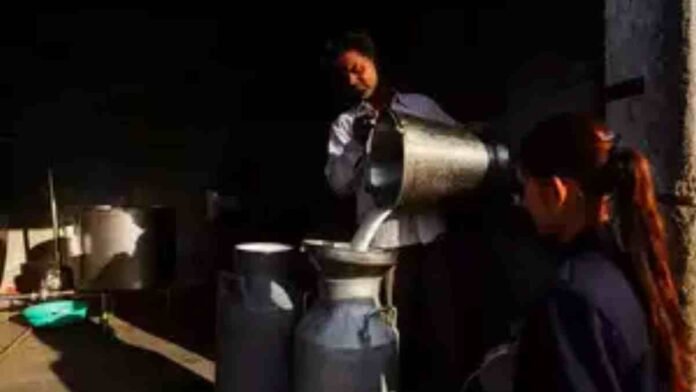From the morning glass of milk that the majority of middle class school students down to its role in Hindu religious rites, milk is everywhere in India. As prices rise, it may now cause problems for Prime Minister Narendra Modi‘s administration.
At 57.15 rupees ($0.6962) a litre, the average retail price of milk in India has jumped 12% from a year ago. There are several causes at work, including increased grain prices, poorer dairy yields from underfeeding cows brought on by the pandemic’s disruption of demand at the time, and increased cereal prices.
The second-heaviest food item in India’s food basket, milk, thus contributes to total inflation. According to information released on Wednesday, India’s headline inflation for March dropped below the central bank’s objective of 6% as high borrowing rates slowed down overall demand. At 9.31%, milk inflation, however, trended higher than the total average.
High costs of milk and kindred products — emotional commodities that most impoverished families aspire to and wealthy people perceive as indications of status — have the possibility of becoming a political problem for Modi’s government ahead of national elections next summer.
R.S. Sodhi, president of the Indian Dairy Association, believes that this upward trend in milk prices is dangerous since milk is a highly elastic product with a direct influence on consumer costs.
For the time being, the demand-supply imbalance has aided a rise in dairy equities in India. Analysts anticipate that this situation would allow organised firms to increase their market share in India.
However, Sodhi warned that with increased procurement costs, dairy firms’ balance sheets would eventually be put under pressure. According to him, one reason for the increase in milk costs over the winter is the rising cost of grains and rice bran, which are components in animal feed and are deterring farmers from feeding their cattle adequately.
The increase in feed prices has also been influenced by unseasonably high temperatures and rain. Inflation for cereal in March 2023 was 15.27%.
However, issues were developing long before the cost of cow feed started to increase. Demand for milk and milk products decreased when the coronavirus epidemic struck and India imposed one of the harshest lockdowns in history as a result of several eateries and confectionery shops being forced to close either temporarily or permanently.
Nearly a quarter of the world’s milk is produced in India, yet those enormous amounts are generated in great part by tens of millions of tiny farmers who keep few animals. They were unable to properly feed their cattle as a result of the decline in demand.
The majority of the milk produced in South Asia is consumed there, but exports have also been increasing, particularly after the worldwide virus disruption subsided and demand for milk products increased globally. In the fiscal year 2021–2022, India exported dairy products worth roughly $391.59 million, up from $321.96 million the year before.
As summer temperatures increase, there is a surge in demand for ice cream and yoghurt. The season of Hindu festivities follows, beginning around September and lasting for the following several months. Milk-based delicacies are a mainstay at this time.
While Modi redesigned a food programme to provide around 800 million Indians with free monthly rations of rice and wheat, growing prices of other household essentials increase the pressure on his administration to do more to aid residents in coping with the rise in living expenses. That’s essential as he gets ready to run for reelection in the nation with the world’s highest rate of poverty the following year.
As long as the opposition is in disarray, many predict Modi will win. However, considering that the Reserve Bank of India has already delayed monetary tightening despite rising economic concerns, the government may still need to undertake some heavy lifting to push back pricing pressures.
Although experts anticipate a future decline in global inflation, things are not looking good for this mainstay. According to India’s central bank, the tight demand-supply balance and pressures on feed costs might keep milk prices steady until the summer.
The legendary Amul brand is owned by Gujarat Cooperative Milk Marketing Federation, the largest dairy cooperative in India. Amul’s Jayen Mehta, the organization’s executive director, likens it to walking a tightrope. On the one hand, it’s about ensuring farmers receive a fair price to encourage them to keep producing milk, while on the other, it’s about reducing the impact of inflation on consumers for a necessary commodity, he added.
Even middle class families are already changing how much milk they consume. Lawyer and mother of a five-year-old Ruchika Thakur says cutting back on milk purchases is not an option, so she has started purchasing less expensive choices to combat the rise in price.



